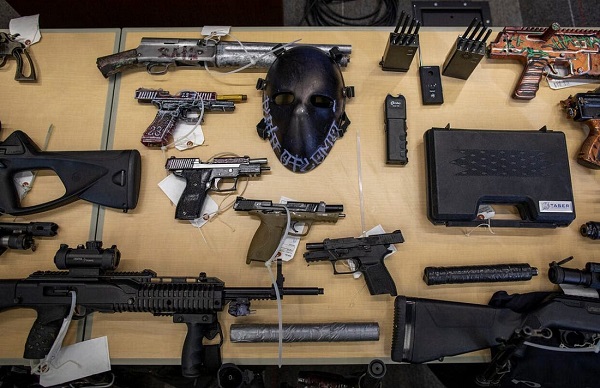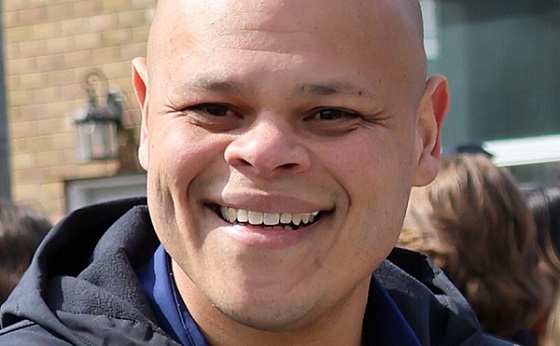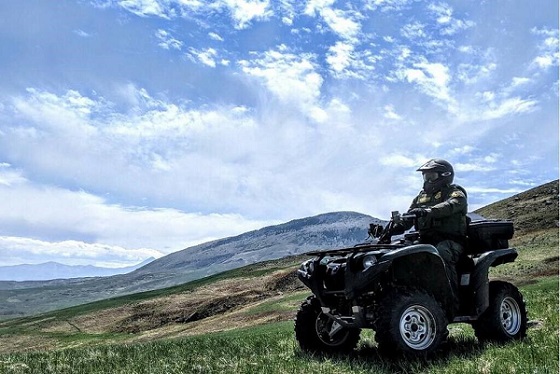Uncategorized
Death toll rises to 76 in California fire with winds ahead

CHICO, Calif. — Northern California crews battling the country’s deadliest wildfire in a century were bracing for strong winds, with gusts up to 50 miles per hour, creating the potential to erode gains they have made in containing a disaster that has killed at least 76 and
Even as hundreds of searchers sift through the rubble in the town of Paradise looking for the dead, nearly 1,300 people remain unaccounted for more than a week after the fire sparked in Butte County, Sheriff Kory Honea announced Saturday night. Authorities stressed that the long roster does not mean they believe all those people are missing.
Honea pleaded with fire evacuees Saturday to review the list of those reported as unreachable by family and friends and call if they are safe. Deputies have located hundreds of people to date, but the overall number keeps growing because they are adding more names, including those from the disaster’s chaotic early hours, Honea said.
“It’s really very important for you to take a look at the list and call us if you’re on the list,” he said.
The remains of five more people were found Saturday, including four in the decimated town of Paradise and one in nearby Concow, bringing the number of dead to 76.
Honea said among the dead was Lolene Rios, 56, whose son Jed tearfully told KXTV in Sacramento that his mother “had endless amount of love for me.”
President Donald Trump toured the area Saturday, joined by California’s outgoing and incoming governors, both Democrats who have traded sharp barbs with the Republican administration. He also visited Southern California, where firefighters were making progress on a wildfire that tore through communities west of Los Angeles from Thousand Oaks to Malibu, killing three people.
The president pledged the full support of the federal government. Gov. Jerry Brown and Gov.-elect Gavin Newsom thanked him for coming out.
“We’ve never seen anything like this in California, we’ve never seen anything like this yet. It’s like total devastation,” Trump said as he stood amid the ruins of Paradise.
Rain was forecast for midweek, which could help firefighters but also complicate the search for remains.
Northern California’s Camp Fire has destroyed nearly 10,000 homes and torched 233 square miles (603 square
The fire zone in Northern California is to some extent Trump country, and that enthusiasm was on display as dozens of people cheered and waved flags as his motorcade went by.
Kevin Cory, a wildfire evacuee who lost his home in Paradise, praised Trump for coming to a state that is often at odds with the White House.
“I think that California’s been really horrible to him and the fights. I mean they’re suing him,” he said. “It’s back and forth between the state and the feds. It’s not right.”
But for the most part, survivors, some who had barely escaped and no longer had homes, were too busy packing up what little they had left or seeking help to pay much attention to the president’s visit.
Michelle Mack Couch, 49, waited in line to get into a Federal Emergency Management Agency
“Let’s hope he gets us some help,” said Couch, who voted for Trump and whose rental home burned down last week. But as far as taking time out to watch the president, she said wryly, “We don’t have a TV anymore.”
Honea expressed hope that Trump’s visit would help with recovery, saying the tour by the Republican president and California’s Democratic leaders “signals a spirit of
In Southern California, Trump also met briefly at an airport hangar with families and first responders touched by the shooting at the Borderline Bar & Grill in Thousand Oaks more than a week ago.
Trump called the shooting at a country music bar, which left 12 dead, “a horrible, horrible event.”
___
Associated Press writers Jonathan Lemire in Paradise, California, and Janie Har and Daisy P. Nguyen in San Francisco contributed to this report.
Sudhin Thanawala And Terence Chea, The Associated Press
Uncategorized
Cost of bureaucracy balloons 80 per cent in 10 years: Public Accounts

The cost of the bureaucracy increased by $6 billion last year, according to newly released numbers in Public Accounts disclosures. The Canadian Taxpayers Federation is calling on Prime Minister Mark Carney to immediately shrink the bureaucracy.
“The Public Accounts show the cost of the federal bureaucracy is out of control,” said Franco Terrazzano, CTF Federal Director. “Tinkering around the edges won’t cut it, Carney needs to take urgent action to shrink the bloated federal bureaucracy.”
The federal bureaucracy cost taxpayers $71.4 billion in 2024-25, according to the Public Accounts. The cost of the federal bureaucracy increased by $6 billion, or more than nine per cent, over the last year.
The federal bureaucracy cost taxpayers $39.6 billion in 2015-16, according to the Public Accounts. That means the cost of the federal bureaucracy increased 80 per cent over the last 10 years. The government added 99,000 extra bureaucrats between 2015-16 and 2024-25.
Half of Canadians say federal services have gotten worse since 2016, despite the massive increase in the federal bureaucracy, according to a Leger poll.
Not only has the size of the bureaucracy increased, the cost of consultants, contractors and outsourcing has increased as well. The government spent $23.1 billion on “professional and special services” last year, according to the Public Accounts. That’s an 11 per cent increase over the previous year. The government’s spending on professional and special services more than doubled since 2015-16.
“Taxpayers should not be paying way more for in-house government bureaucrats and way more for outside help,” Terrazzano said. “Mere promises to find minor savings in the federal bureaucracy won’t fix Canada’s finances.
“Taxpayers need Carney to take urgent action and significantly cut the number of bureaucrats now.”
Table: Cost of bureaucracy and professional and special services, Public Accounts
| Year | Bureaucracy | Professional and special services |
|
$71,369,677,000 |
$23,145,218,000 |
|
|
$65,326,643,000 |
$20,771,477,000 |
|
|
$56,467,851,000 |
$18,591,373,000 |
|
|
$60,676,243,000 |
$17,511,078,000 |
|
|
$52,984,272,000 |
$14,720,455,000 |
|
|
$46,349,166,000 |
$13,334,341,000 |
|
|
$46,131,628,000 |
$12,940,395,000 |
|
|
$45,262,821,000 |
$12,950,619,000 |
|
|
$38,909,594,000 |
$11,910,257,000 |
|
|
$39,616,656,000 |
$11,082,974,000 |
Uncategorized
Trump Admin Establishing Council To Make Buildings Beautiful Again


From the Daily Caller News Foundation
By Jason Hopkins
The Trump administration is creating a first-of-its-kind task force aimed at ushering in a new “Golden Age” of beautiful infrastructure across the U.S.
The Department of Transportation (DOT) will announce the establishment of the Beautifying Transportation Infrastructure Council (BTIC) on Thursday, the Daily Caller News Foundation exclusively learned. The BTIC seeks to advise Transportation Secretary Sean Duffy on design and policy ideas for key infrastructure projects, including highways, bridges and transit hubs.
“What happened to our country’s proud tradition of building great, big, beautiful things?” Duffy said in a statement shared with the DCNF. “It’s time the design for America’s latest infrastructure projects reflects our nation’s strength, pride, and promise.”
“We’re engaging the best and brightest minds in architectural design and engineering to make beautiful structures that move you and bring about a new Golden Age of Transportation,” Duffy continued.
Mini scoop – here is the DOT’s rollout of its Beautifying Transportation Infrastructure Council, which will be tasked with making our buildings beautiful again. pic.twitter.com/
9iV2xSxdJM — Jason Hopkins (@jasonhopkinsdc) October 23, 2025
The DOT is encouraging nominations of the country’s best architects, urban planners, artists and others to serve on the council, according to the department. While ensuring that efficiency and safety remain a top priority, the BTIC will provide guidance on projects that “enhance” public areas and develop aesthetic performance metrics.
The new council aligns with an executive order signed by President Donald Trump in August 2025 regarding infrastructure. The “Making Federal Architecture Beautiful Again” order calls for federal public buildings in the country to “respect regional architectural heritage” and aims to prevent federal construction projects from using modernist and brutalist architecture styles, instead returning to a classical style.
“The Founders, in line with great societies before them, attached great importance to Federal civic architecture,” Trump’s order stated. “They wanted America’s public buildings to inspire the American people and encourage civic virtue.”
“President George Washington and Secretary of State Thomas Jefferson consciously modeled the most important buildings in Washington, D.C., on the classical architecture of ancient Athens and Rome,” the order continued. “Because of their proven ability to meet these requirements, classical and traditional architecture are preferred modes of architectural design.”
The DOT invested millions in major infrastructure projects since Trump’s return to the White House. Duffy announced in August a $43 million transformation initiative of the New York Penn Station in New York City and in September unveiledmajor progress in the rehabilitation and modernization of Washington Union Station in Washington, D.C.
The BTIC will comprise up to 11 members who will serve two-year terms, with the chance to be reappointed, according to the DOT. The task force will meet biannually. The deadline for nominations will end Nov. 21.
-

 Business2 days ago
Business2 days agoCanada invests $34 million in Chinese drones now considered to be ‘high security risks’
-

 Great Reset2 days ago
Great Reset2 days agoSurgery Denied. Death Approved.
-

 Business2 days ago
Business2 days agoThe Climate-Risk Industrial Complex and the Manufactured Insurance Crisis
-

 Economy2 days ago
Economy2 days agoAffordable housing out of reach everywhere in Canada
-

 Health2 days ago
Health2 days agoThe Data That Doesn’t Exist
-

 Crime1 day ago
Crime1 day agoInside the Fortified Sinaloa-Linked Compound Canada Still Can’t Seize After 12 Years of Legal War
-

 Great Reset15 hours ago
Great Reset15 hours agoProposed ban on euthanasia for mental illness sparks passionate debate in Canada’s Parliament
-

 National1 day ago
National1 day agoLiberal bill “targets Christians” by removing religious exemption in hate-speech law










